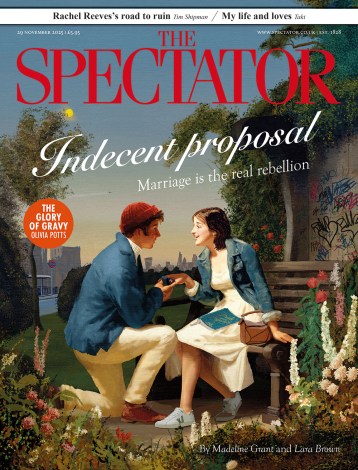
Giselle; Triple Bill
The Royal Ballet
In my view, the debuts of Marianela Nuñez and Lauren Cuthbertson in Giselle have been the highlights of London’s current ballet season. I wish I had the writing abilities of Théophile Gautier, the man who first turned dance criticism into a respectable profession, to be able to convey the excitement I found at each performance. Alas, only a great romantic writer like Gautier could come up with one-word definitions that encapsulate the distinctive qualities of great artists — in his words, Marie Taglioni’s ethereal dancing was ‘Christian’, while Fanny Elssler’s more sensuous and earth-bound style was ‘pagan’. Besides, times change and flippant metaphors are often looked down on as synonymous with poor writing.
Nuñez, who opened the run of Giselle, opted for a vibrantly sanguine approach to the great Romantic role, regarded by many as ballet’s equivalent of Hamlet. Without ever going against the work’s stylistic demands, she bestowed on the entire performance an irresistible dramatic immediacy that transcended the constraints imposed by the 1841 ballet’s choreographic and theatrical conventions. Her mad scene, at the end of act one, was one of the most breathtaking examples of ‘modern’ convincing theatre artistry I have seen in almost 45 years. Such a superbly shaded dramatic reading did not come to the fore only in the mime scenes, but it also informed every single moment of her performance, complementing successfully her well known and much admired impeccable technical abilities. As the doomed, forgiving and rebellious ghost in the second act, she showed a seldom seen and highly captivating combination of romantic etherealness and the powerful desperation of a not-so-submissive woman fighting for what she longs for. I would not be surprised if her magnificent Giselle was soon to enter the annals of dance history.
Cuthbertson was no less dramatic, but opted for a reading of jilted heroine who focused more on the diaphanous, Romantic notion of the innocent, angel-like victimised woman. Signs of the impending drama were thus detectable from her very first entrance. In the second act, the more diaphanous reading contributed to heightening the performance’s aura of supernatural magic, and brought magically to life famous and less famous illustrations of the period and of the ballet. But despite being a perfect modern-day incarnation of the Romantic ideal, Cuthbertson never indulged in those dated mannerisms many not-so good dancers refer to in the name of stylistic accuracy. Far from freezing in a series of pretty poses, Cuthbertson also bestowed an aura of modern immediacy on to her reading of the eponymous heroine, with splendid results. Technically, she too was superb, despite some first-night, nerve-related minor inaccuracies.
Luckily, the two ballerinas’ performances were aptly matched by those of two exceptional partners: Carlos Acosta with Nuñez and Rupert Pennefather with Cuthbertson. I was very pleased to see that the former had toned down his customary ebullient prowess to turn his Albrecht into a charismatic aristocrat who truly repents at the end of the drama. As for Pennefather, he is the quintessential incarnation of the Romantic hero, and his last scene was truly heart-wrenching. It should also be noted that both ballerinas benefited from dancing in what I believe to be the sole production of Giselle that is truly worth seeing.
I wish I could express the same enthusiasm for the triple bill I saw two weeks ago in between the two Giselles. Unfortunately, I found it to be a rather uninspired and uninspiring tribute to both Diaghilev and his legendary Ballets Russes — the centenary of which will be celebrated this week in many parts of the world. Les Sylphides, once a signature piece for the Royal Ballet, looked drearily two-dimensional and stylistically wrong from beginning to end. Similarly, Firebird looked tiresome and horribly old. Such dreariness impinged greatly on Sensorium, an interesting new creation by Alistair Marriott, which I hope to see in happier circumstances.





Comments